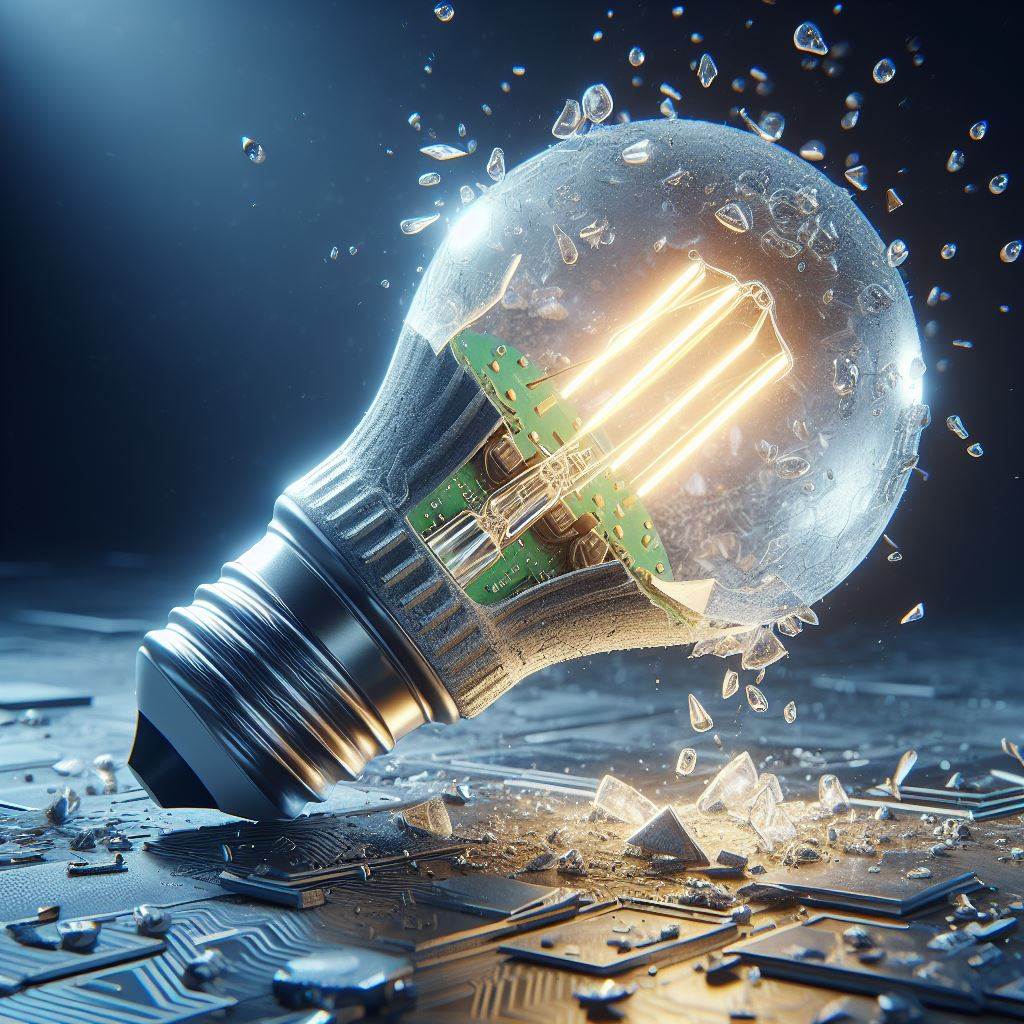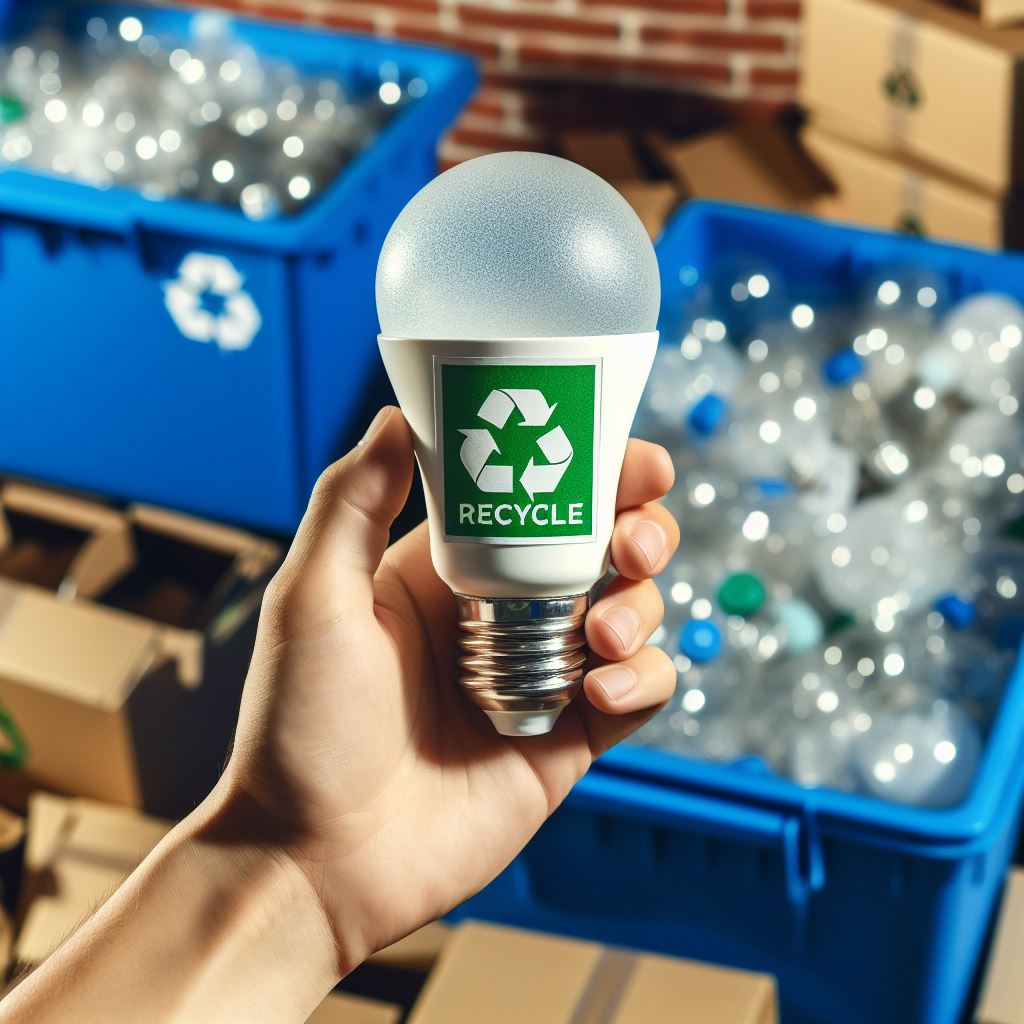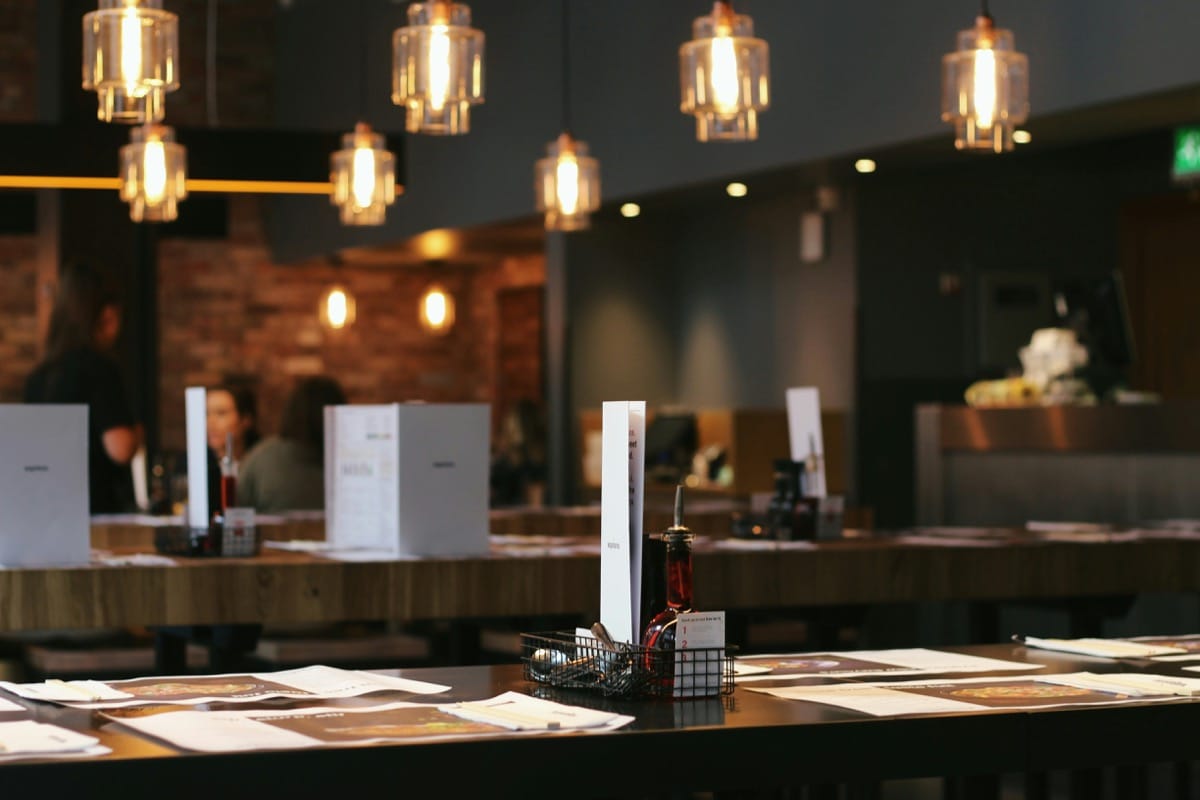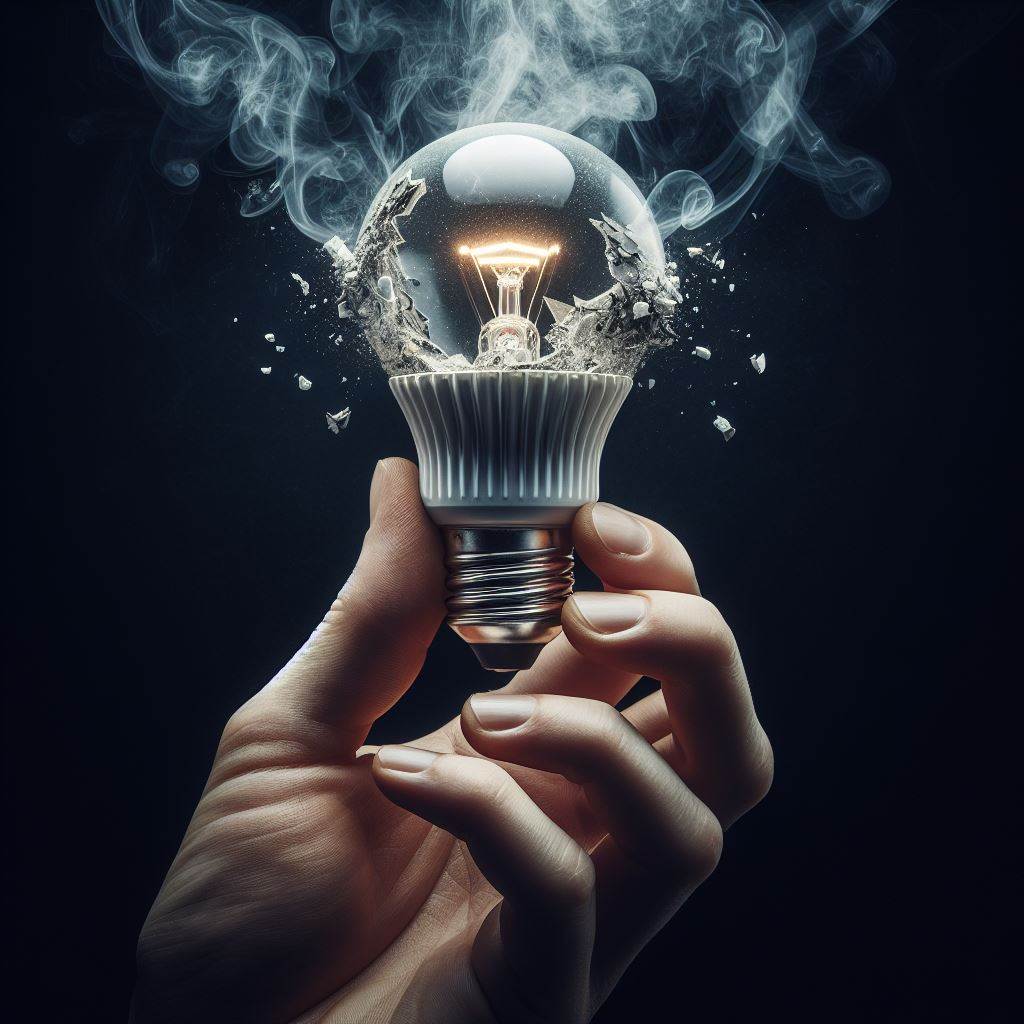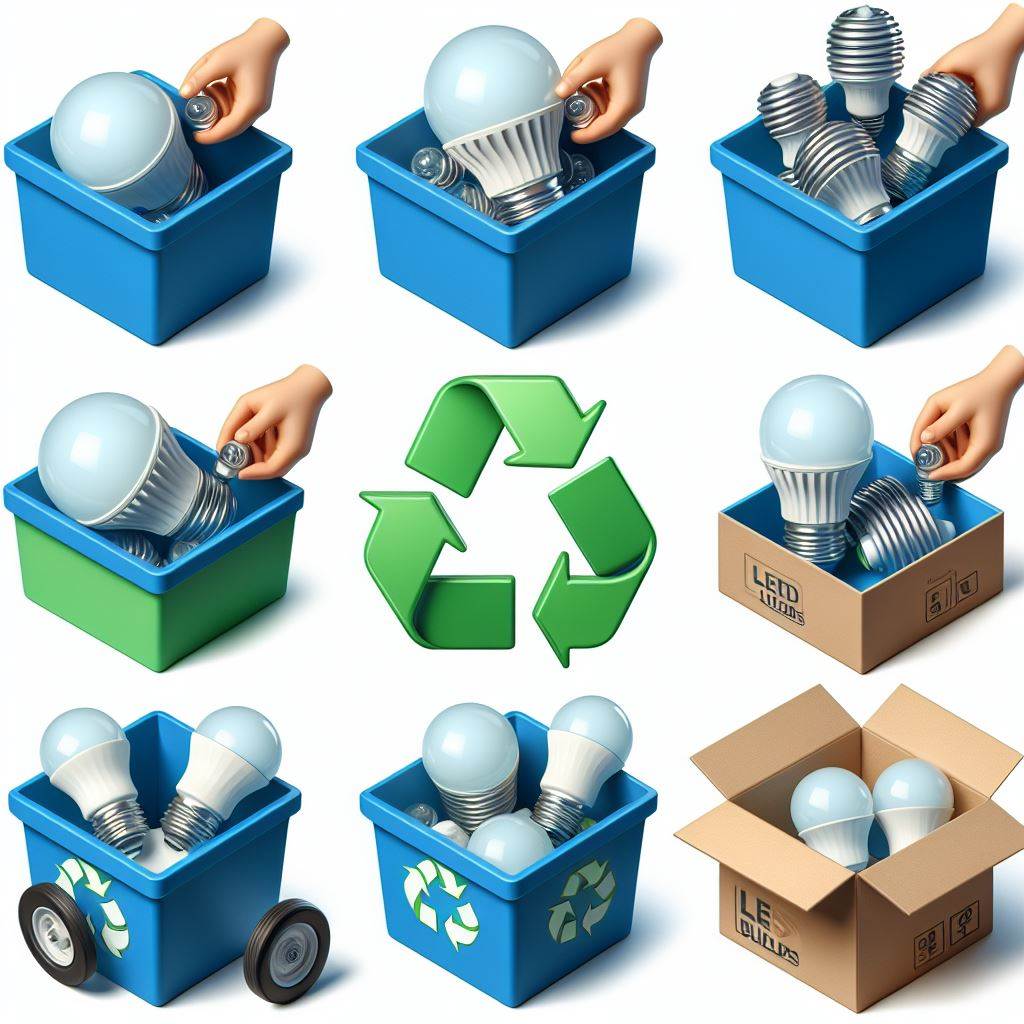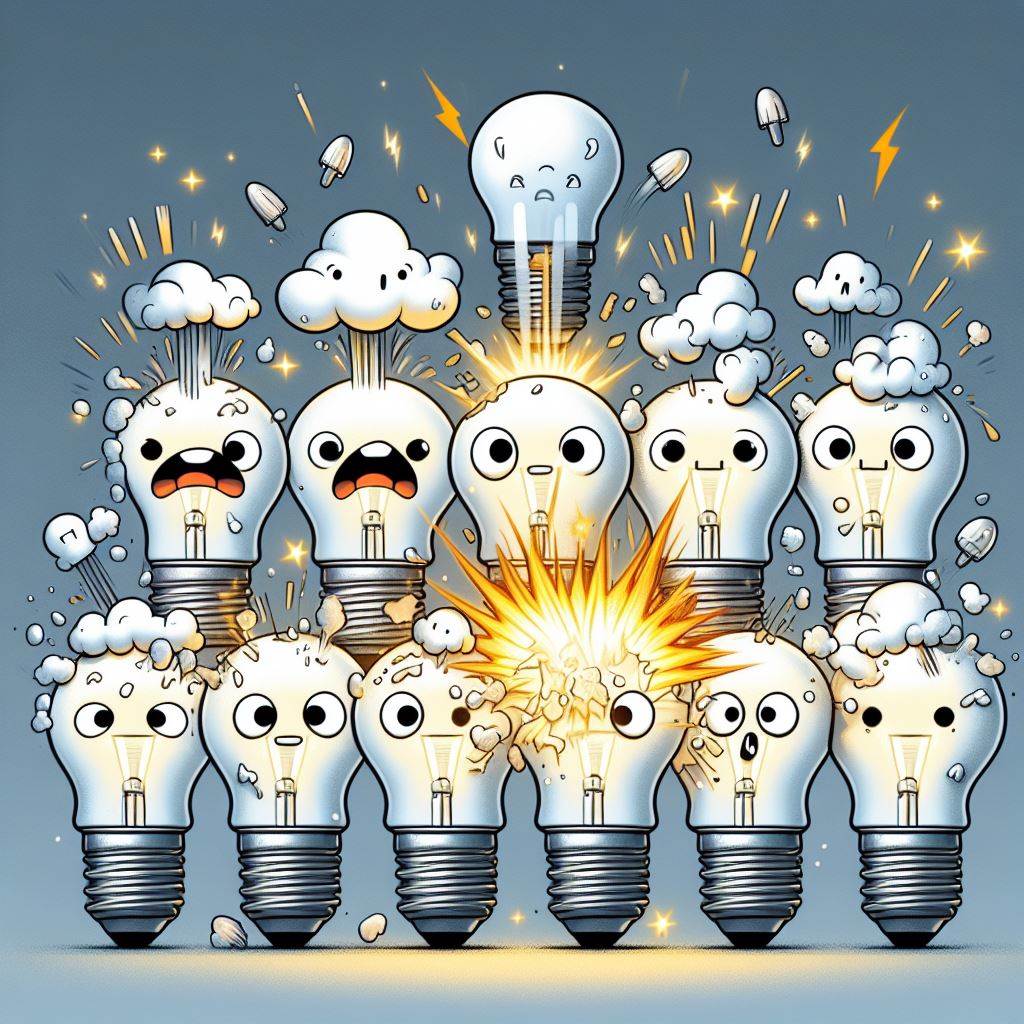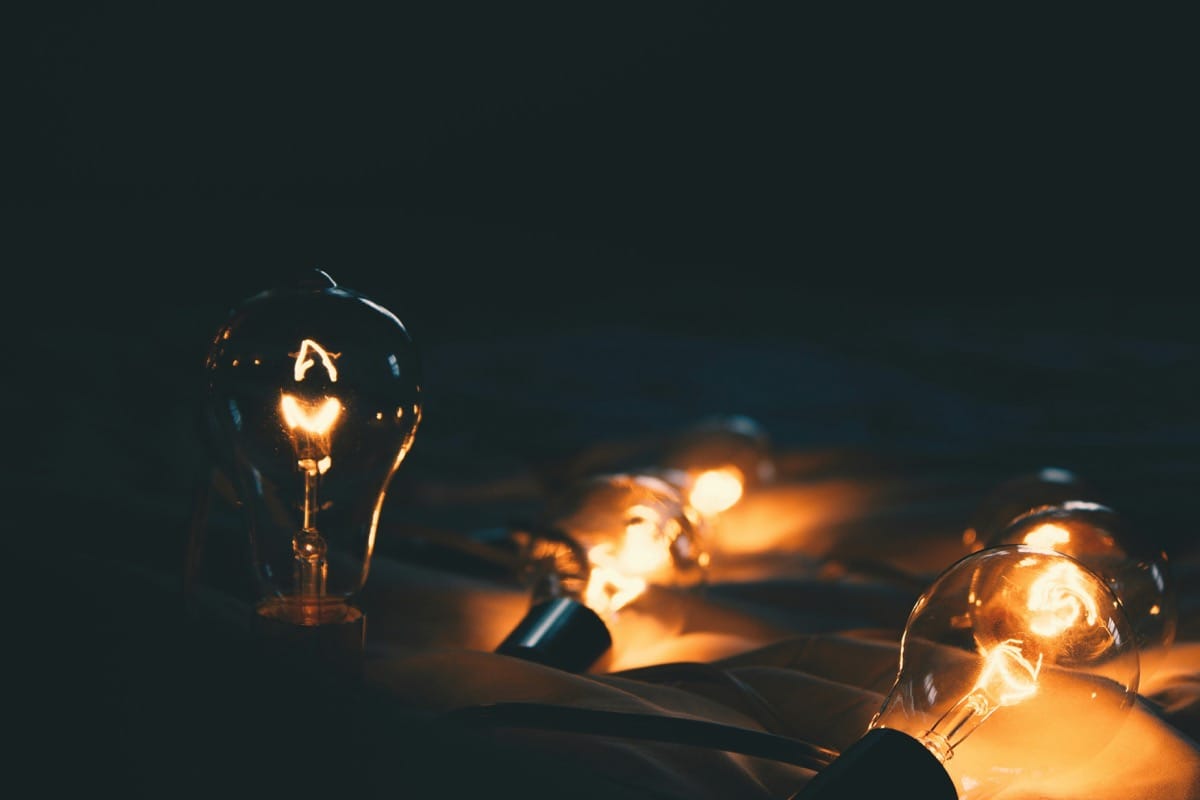As an expert in the field of lighting technology, I often come across questions about the safety of LED light bulbs, especially when it comes to breakage. LED light bulbs have gained immense popularity in recent years due to their energy efficiency and long lifespan. However, many people wonder if these innovative light sources pose any danger when shattered.
In this blog post, we will delve into the topic of whether LED light bulbs are dangerous when broken. We will explore the components of LED bulbs, the potential risks of breakage, and how to safely clean up and dispose of a broken LED light bulb. By the end of this post, you will have a better understanding of the safety implications of handling broken LED light bulbs.
What Makes LED Light Bulbs Different?
Let’s dive into the extraordinary world of LED light bulbs. Have you ever wondered what sets them apart from traditional incandescent bulbs? Well, let me enlighten you on the unique features of LED light bulbs that make them a game-changer in the lighting industry.
Efficiency like Never Before
LED light bulbs are renowned for their energy efficiency. They consume significantly less power than incandescent bulbs, making them a cost-effective and environmentally friendly lighting solution.
Durability at Its Core
Unlike fragile incandescent bulbs, LED light bulbs are robust and durable. They are constructed using sturdy materials that can withstand minor impacts, making them less prone to breakage.
Longevity that Shines Bright
One of the most remarkable features of LED light bulbs is their exceptional lifespan. These bulbs can last up to 25 times longer than traditional incandescent bulbs, reducing the frequency of replacements and saving you money in the long run.
When you choose LED light bulbs, you’re not just investing in a bright and efficient lighting solution. You’re opting for a long-lasting, durable, and environmentally friendly option that outshines traditional bulbs in every way.
Understanding the Components of LED Light Bulbs
Have you ever wondered what makes those tiny LED light bulbs shine so brightly and last so long? Let’s dive into the intricate world of these innovative lighting devices and uncover the essential components that make them tick.
The Heart of LED Light Bulbs
At the core of every LED light bulb is a semiconductor chip. This tiny chip converts electricity into light using a process called electroluminescence. Unlike traditional incandescent bulbs that rely on filaments to produce light, LED bulbs operate on a completely different principle.
The Secret Sauce: Phosphor Coating
One crucial component of LED light bulbs is the phosphor coating applied to the semiconductor chip. This coating plays a vital role in determining the color temperature and output of the light emitted by the bulb. It helps create the warm or cool tones we see in different LED lighting options.
Supporting Players: Heat Sink and Driver
To ensure the longevity and efficiency of LED light bulbs, heat management is key. LED bulbs incorporate a heat sink that helps dissipate excess heat, preventing the semiconductor chip from overheating. Additionally, the driver in the bulb regulates the flow of electricity, ensuring optimal performance.
So, the next time you switch on an LED light bulb, marvel at the intricate dance of these components working together to illuminate your space with energy-efficient light.
Are LED Light Bulbs Fragile?
LED light bulbs have become a popular choice for environmentally conscious consumers looking to save money on energy bills. But with their sleek design and energy efficiency, are LED light bulbs fragile? Let’s shed some light on this prevalent concern.
What Makes LED Light Bulbs Different?
LED light bulbs differ from traditional incandescent bulbs in their construction. **Made of durable materials**, LED bulbs require special handling due to their unique design.
Understanding the Components of LED Light Bulbs
LED bulbs contain various components like the light-emitting diode, driver, and heat sink. While these elements make LED bulbs efficient, they also make them somewhat more delicate compared to traditional lighting options.
How Do LED Light Bulbs Break?
LED light bulbs can break from impacts, mishandling, or even poor manufacturing. The fragile glass casing and sensitive electronic components can be easily damaged if not handled with care.
Is There a Risk of Harm When LED Light Bulbs Break?
Unlike traditional incandescent bulbs that shatter into sharp pieces, LED light bulbs typically break into larger chunks, reducing the risk of injury. However, broken LED bulbs can still pose hazards due to the release of potentially harmful chemicals like mercury vapor.
If you do break an LED bulb, here are some steps you can take to minimize any risks:
- Open windows and allow the room to ventilate.
- Avoid stepping on any broken glass or components.
- Use gloves to clean up the broken pieces carefully.
Remember, while LED light bulbs are more durable than traditional bulbs, they still require careful handling to prevent breakage. By following proper precautions, you can ensure the safety of both yourself and the environment.
How Do LED Light Bulbs Break?
So, you’ve heard about the energy-efficient benefits of LED light bulbs, but you may be wondering what happens when one breaks. Let’s dive into the nitty-gritty of how LED light bulbs may shatter under certain circumstances.
External Force Impact
LED light bulbs are not inherently fragile, but like any other electronic device, they can break when subjected to forceful impacts. Dropping an LED bulb from a height or hitting it against a hard surface can cause it to shatter.
Overheating
LED light bulbs generate minimal heat compared to traditional incandescent bulbs. However, excessive heat buildup due to poor ventilation or using incompatible fixtures can lead to the bulb’s enclosure cracking or the internal components failing.
Manufacturing Defects
While rare, manufacturing defects such as weak solder joints or subpar materials could compromise the structural integrity of an LED light bulb. These defects may cause the bulb to break unexpectedly.
Despite these potential causes of breakage, it’s important to note that LED light bulbs are generally safe and durable when handled properly.
And although the chances of LED light bulbs breaking are slim, it’s essential to know how to handle a broken LED bulb to minimize any risk of harm.
But what exactly makes LED light bulbs different from traditional incandescent or CFL bulbs?
And how do their components contribute to their longevity and performance?
Are LED light bulbs truly as fragile as some may believe?
And is there a genuine risk of harm associated with broken LED light bulbs?
Is There a Risk of Harm When LED Light Bulbs Break?
LED light bulbs are known for their energy efficiency and longevity, making them a popular choice for many households and businesses. However, a common concern among consumers is the safety of these bulbs when they break. Let’s delve into whether there is a risk of harm when LED light bulbs break.
What Makes LED Light Bulbs Different?
- Energy efficiency
- Longevity
- Environmentally friendly
Understanding the Components of LED Light Bulbs
LED light bulbs are made of solid-state components, such as semiconductors, which make them more durable compared to traditional incandescent bulbs that contain fragile filaments.
Are LED Light Bulbs Fragile?
- LED light bulbs are sturdier than traditional bulbs due to their solid construction.
- They are less prone to breaking from minor impacts.
How Do LED Light Bulbs Break?
When LED light bulbs do break, it’s typically due to significant force or pressure applied to them. This can occur during mishandling or if the bulb falls from a height.
Is There a Risk of Harm When LED Light Bulbs Break?
- LED light bulbs do not contain toxic substances like mercury, which are present in some other types of bulbs, reducing the risk of harm from exposure.
- In the unlikely event that an LED bulb does break, the risk of physical harm is minimal due to its durable design.
Remember, while LED light bulbs are generally safe, it’s essential to handle and dispose of them properly to minimize any potential risks. But overall, rest assured that the risk of harm from a broken LED light bulb is low compared to other types of lighting options.
Conclusion
After examining the question “Are LED light bulbs dangerous when broken?” from various angles, it is clear that while LED light bulbs do contain some hazardous materials, the risk of harm from a broken bulb is minimal compared to traditional incandescent or CFL bulbs.
LED light bulbs are designed to contain any harmful substances within the bulb itself, reducing the chances of exposure. In the rare event that a LED bulb does break, it is important to handle it carefully and properly dispose of it to mitigate any risks.
Ultimately, LED light bulbs are a safe and efficient lighting option for households and businesses alike. By following proper safety guidelines and handling procedures, the benefits of energy savings and longer lifespan that LED bulbs offer far outweigh any potential dangers.
Frequently Asked Questions (FAQs)
Are LED light bulbs dangerous when broken?
LED light bulbs are generally safe when broken compared to traditional incandescent bulbs as they don’t contain hazardous materials like mercury.
Do LED light bulbs contain harmful substances?
LED light bulbs do not contain harmful substances like mercury, making them safer for the environment and human health.
Can LED light bulbs emit dangerous UV rays?
LED light bulbs produce very little UV radiation, making them safe for everyday use without posing a risk to health.
Are broken LED light bulbs a fire hazard?
Unlike traditional incandescent bulbs, broken LED light bulbs do not pose a fire hazard as they do not generate heat in the same way.
Do LED light bulbs shatter easily?
LED light bulbs are more durable than traditional bulbs and are less likely to shatter if dropped, but caution should still be taken when handling them.
Are LED light bulb fragments harmful if touched?
While it’s best to avoid contact with broken LED bulb fragments, they are not typically harmful unless ingested in large quantities.

